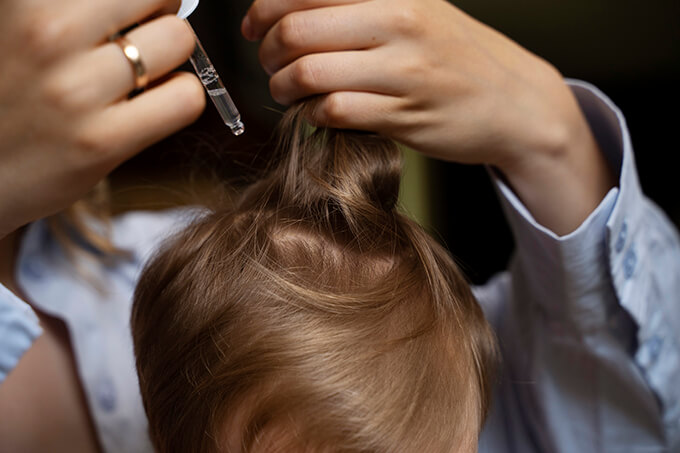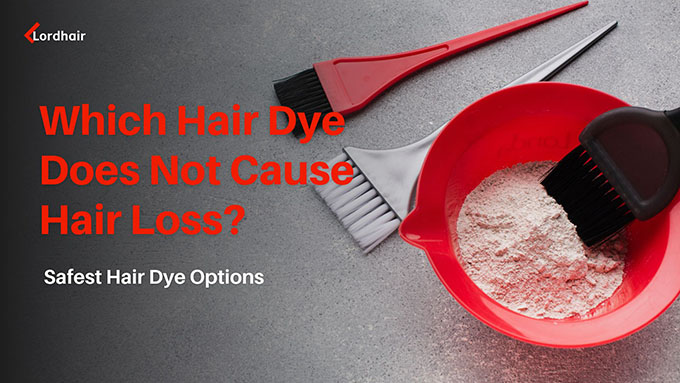The Truth About Hair System Shedding: What’s Normal & What’s Not?
- Written by Leo Lordhair
- | Published Mar 6, 2025
- |
- 6 min read
 Listen to the full text
Listen to the full textHair systems have emerged as a revolutionary solution for many who suffer from hair loss and seek a non-surgical approach without complications. But most of the hair systems users face shedding issues that can become a source of frustration as well as an indicator of other problems. Distinguishing between reasonable amounts of shedding versus problematic amounts of shedding hair is important to ensure the duration and quality of hair systems.
Maintenance practices, base type, knotting technique, and the use of adhesives are some core components that determine hair system life span and the rate at which it sheds. Users can utilize these pieces of information and choose appropriate strategies to mitigate hairpiece problems and maximize the value of their investment.
Understanding Hair System Shedding: Why Does It Happen?

Both natural hair and hair systems undergo shedding. While natural hair has a daily shedding hair cycle, hair within a hair system has no regeneration capabilities. Once a strand falls out, there is no regrowth. Shedding in hair systems is caused by multiple factors such as:
- Normal Wear and Tear: With time, day-to-day activities like brushing or styling and even friction with the pillows or clothing can easily displace the hair.
- Care and Maintenance Neglect: Aggressive brushing, the use of unsuitable products or even lack of consistent maintenance can drastically affect the health of the hair system.
- Adhesive and Removal Processes: The use of aggressive adhesive removers or improper detaching of the hair system can cause premature pulling out of hair.
- Ventilation and Knotting Techniques: The techniques used to tie in the hair onto the base affects how secure it is. Some techniques are more advanced than others and control the amount of shedding expected in the future.
What’s Normal Shedding & What Not
Normal Shedding
Loss of hair to some extent is unavoidable and is to be anticipated. It happens on account of:
- Friction on a daily basis while brushing, washing and styling hair.
- Weakening of adhesive that occurs over hair knots through the passage of time.
- From the beginning, lace or mesh bases are prone to shedding due to their fragility.
Excessive Shedding (Signs of a Problem)
A big concern is when hair falls off in chunks, which is a clear indicator that something is amiss. Some of the Includes includes:
- Most worrying, thinning patches appearing in bald spots denote extremely rapid rate of growth.
- Excessive sending post braid installation can indicate an issue with the security of the knots or the quality of the system itself.
- Constructed without care and contain defects as well, loose knots or poorly ventilated pieces will shed too easily.
Types of Knotting in Hair Systems & Their Role in Shedding
The overall health of the system largely relies on one aspect: how the system is put together. Several methods provide varying levels of realism and shed resistance. Tools and techniques available differ based on the environment and personal style, so it is important to know how these techniques work.
A. Single Knot
Single knotting, although the technique is considered the most simple, is among the most elegant strategies. Because it requires a single loop of hair to tie around the base and is one of the newest approaches.
- Structure: A single loop of hair is secured at the base with one knot.
- Appearance: Provides an extremely realistic and concealed look.
- Durability: Less durable because it has only one knot securing the hair.
- Shedding Risk: Greater chances of faster shedding due to lack of security.
- Best For: Hairlines and parting sections which prioritizes realism above everything.
B. Double Knot
Double knotting refers to tying a hair system to the base with double knots. This hair attachment technique not only enables the hair system to stay on longer but also increases the strength of the entire system. It is the most reliable method to use on hair systems.
- Structure: The anchor knot is made for each hair by tying two knots on each hair strand.
- Appearance: More visible than single knots, but is fixable through the use of bleaching agents.
- Durability: Improved because the additional knot aids in the fixation of the strand.
- Shedding Risk: The double knot offers less risk of shedding compared to single knots because the hair is secured with a double knot.
- Best For: Withstands wear and tear in the sides and back of the hair system.

C. V-Loop Knot (Knotless Ventilation)
The looping technique replaces knots with the V-loop, enabling overly thin skin hair systems to appear as if from the scalp itself. This technique, while lacking some durability, is still mostly employed on ultra-thin skin hair systems V-shaped bases.
- Structure: Includes hair which is looped in a V-shape or cuticle into base without knots.
- Appearance: The hair is completely untraceable as it shall seem to be as root like emanating from the scalp surface.
- Durability: Instability because the hair is not secured but merely looped.
- Shedding Risk: The absence of tying knots increases the shedding rate.
- Best For: Systems for ultra-thin skin hair pieces where a natural look is much more important than longevity.
D. Injected Hair (Silk/PU Injection)
“Injected hair” systems rely on modern procedures to imitate growing hair by inserting real hair fibers into a thin Polyurethane (PU) or silk base. It does improve appearance, but it is sensitive and not easy to maintain.
- Structure: Strands of hair are not knotted and instead injected into the PU or silk layer.
- Appearance: It is increasingly realistic and reproduces real hair growth, making it one of the most natural techniques, if not the most natural.
- Durability: Does not break easily but is not very durable and must be handled with care.
- Shedding Risk: There is a moderate risk, especially with a weakened base.
- Best For: Luxury, realistic looking hair wigs systems for those who look for extreme realism and do not care about durability.
Hair System Base Types & Their Impact On Shedding
The material that the base is made from will dictate how durable it is, and if it has a chance of shedding.
A. Lace Base
- Very breathable and light.
- It looks real, but because the structure is very weak, it has a very high shedding rate.
B. Polyurethane ( Skin ) Base
- Provides an excellent bond which allows the hair peace to secure itself well.
- Although not prone to shedding like the lace base, it will minimize shedding over time, but will still need to be replaced after a while.
C. Monofilament Base
- This base is strong and can withstand high density hair without getting damaged.
- It has a minimal amount of shedding, although it is slightly more than what lace does.
- H3 - D. Hybrid Bases (Lace + Poly, Lace + Mono, etc.)
- Most constructions will have some amount of benefit but this one is greater than most.
- Shedding varies due to the different combinations and arrangement of the base.
How to Reduce Shedding & Extend the Life of Your Hair System
To reduce shedding hair systems need to be maintained:
Proper Washing & Conditioning Techniques
- Hair should never be shampooed with products that contain sulfate as it makes hair dry.
- Wash hair while facing downwards so that any knots get unpulled.
- System must not be scrubbed too violently or put in too much heat.
Brushing & Styling Best Practices
- For combing use a soft-bristled brush or wide toothed comb.
- For brushing, start from the tips and go towards the roots, not the other way round.
- Stressful hairstyles must be avoided as they tend to make the knots tighten.
Correct Adhesive Application & Removal
- Make certain that the glue used is suitable for the material being used at the base.
- Avoid strong removers as they can lead to excessive hair strand pulling.
- The system must be detached with the glue already dissolved.
Storage & Maintenance Tips
- Customizable mannequins or other protective cases are best for storing hair systems.
- Deep conditioning routines should be followed regularly.
- Stay away from sunlight too much chlorine and extreme climates for a long time.
Replacing Your Hair Systems with a Shedding Focus
It is evident that every hair system has its shelf life. Knowing when to swap your hair systems helps maintain a seamless appearance.
Indicators of Replacing a Hair System:
- The hair’s coverage and density is too thin.
- Areas of baldness are clearly visible, and restoration efforts are not effective anymore.
- Losing strands, even with the following maintenance schedule.
Steps Taken to Selecting a New Hair System:
- Preferably select a new system with better quality cap, foundation, and knotting style.
- Work with all professionals to get the strongest, most durable one.
- Smart to use a hybrid base to achieve a balance between long lasting and visually appealing.
Conclusion
A lot of users struggle with how to maintain a hair system for maximum shedding. Even more novice users have trouble figuring out how to tell between the normal and excessive. Picking the appropriate knotting style, brace type, and care steps enables the user to make tremendous strides in reducing shedding. Further enhancing the lifespan of the system comes with proper adhesive, gentle touches, and the right materials. The satisfaction that comes from wearing a well-made and maintained hair piece is unquestionable as it gives a user months of care-free confidence.



